
You walk out into your garden in the morning, ready to water your tomato plants, only to find them hunched over, limp, and lifeless. The leaves drooped, the stalks lost all their vigor. Your tomato plant is wilting.
This situation is not ideal, but in most cases, it’s not impossible to fix. There are some common causes of tomato plant wilting that can be rectified immediately, and other less common culprits that require some more serious damage control.
Take a look at these nine causes for wilting and their accompanying remedies. Not all are signs of the end for your tomato garden. If you apply the relevant fixes for many of these problems, your plant should be back to good health in no time.
1. Underwatering
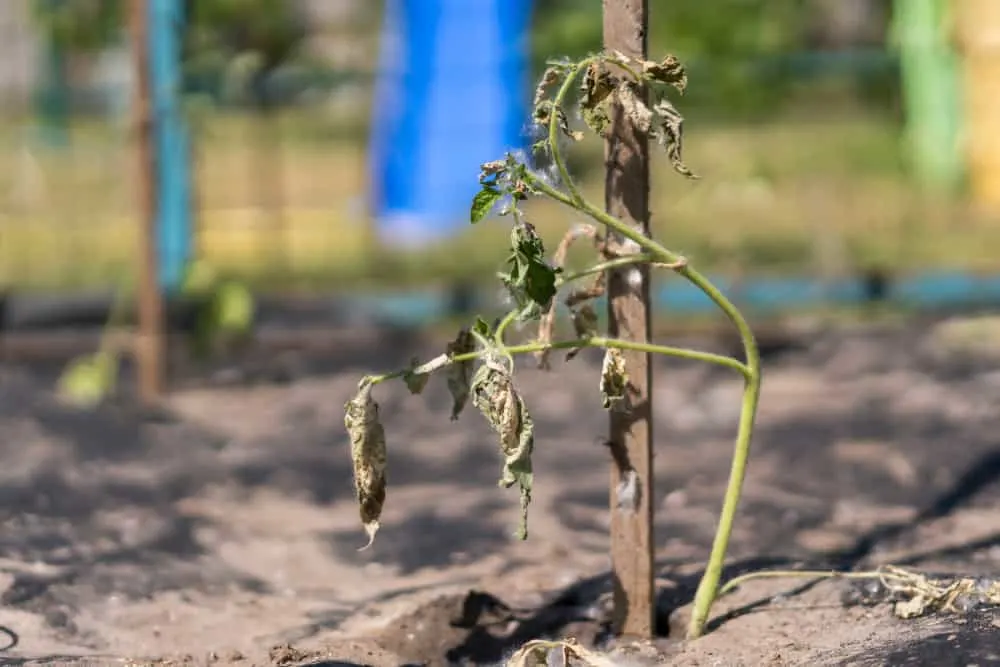
Like many other tomato plant problems, including yellowing leaves, the most common cause of tomato plant wilting is incorrect watering.
Usually, the answer is too little water. Plants hold water in their cells, which gives them their shape and helps them prop themselves up. When the cells lack water, it causes the plant to droop. This can also cause the leaves to look and feel thinner – another sign that underwatering is your problem.
This problem has the quickest fix of them all: water the plant. It should perk up within a few hours of a good, thorough watering.
It is also wise to examine your watering habits to avoid the same problem in the future. Check the soil every day and water as soon as the top inch or two of soil has completely dried out. Don’t wait for your plants to tell you they need water – a healthy plant produces better fruit than a stressed one.
Here’s our guide to correctly watering your tomato plants.
2. Overwatering
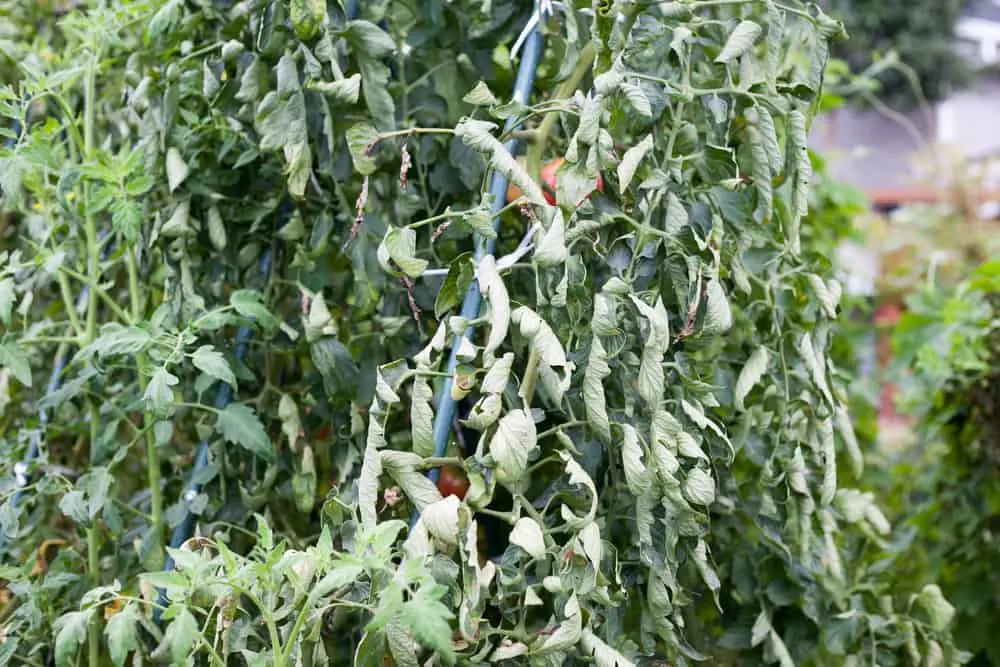
On the other hand, overwatering could also be the culprit.
When there is too much moisture in the soil for long periods of time – more than the plant can absorb – the excess moisture causes the roots to rot. This limits their function and stops the plant from taking up water. If you frequently notice puddles of water around your plants, you’re watering too much.
In this case, depending on how long you’ve overwatered for, the problem may also be an easy fix: limit your watering. Give the soil time to completely dry out before watering again and check if the plant recovers.
If not, you may be dealing with root rot, which can be difficult to tackle. You’ll need to remove the plant from the soil, cut off any sections of dead root, and replant in well-draining soil. Keep a close eye on it as it attempts to establish new roots and hopefully, the plant will spring back to life in a few weeks.
3. Transplanting
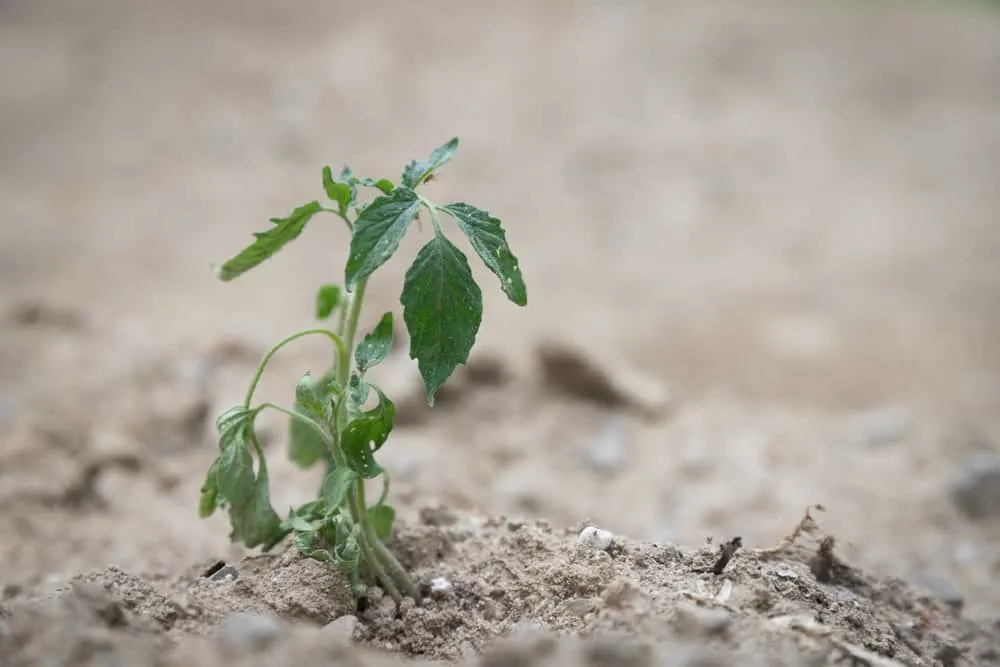
Moving is stressful for everybody – even tomato plants. Transplanting from indoors to outdoors, from warm soil to cold soil, or accidentally damaging the roots in the process of replanting can all cause a condition called transplant shock.
Signs of transplant shock include wilting and yellowing leaves, but these are no cause for alarm.
Your tomato plant simply needs some time to adjust to its new home. Try not to change the conditions or your care routine too much when transplanting to make the transition easier for the plant. Don’t overwater when the plant is in the process of anchoring and establishing new roots. In a week or two, the plant should perk up and return to normal.
4. Damage from Cold Temperatures
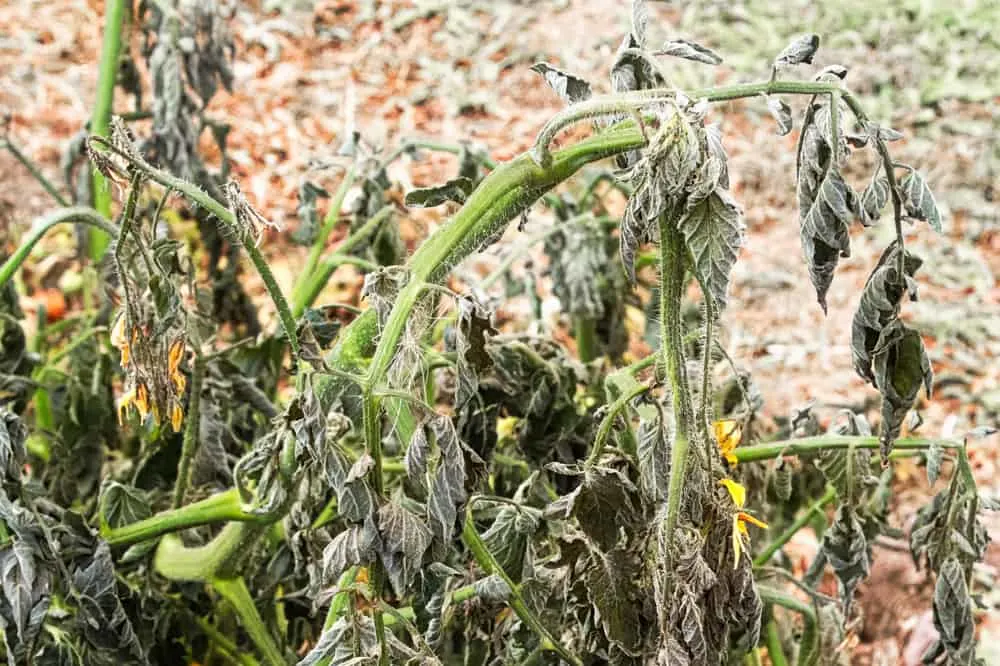
Young tomato plants exposed to cold temperatures early in the growing season can show signs of wilting. The plants can often recover (as long as they aren’t showing signs of serious frost damage) if you find a warmer spot for them or temperatures – especially night time temperatures – climb.
Mature tomato plants that experience a frost at the end of the growing season will also wilt and topple over. This signifies the end of your tomato growing season.
5. Tomato Spotted Wilt Virus
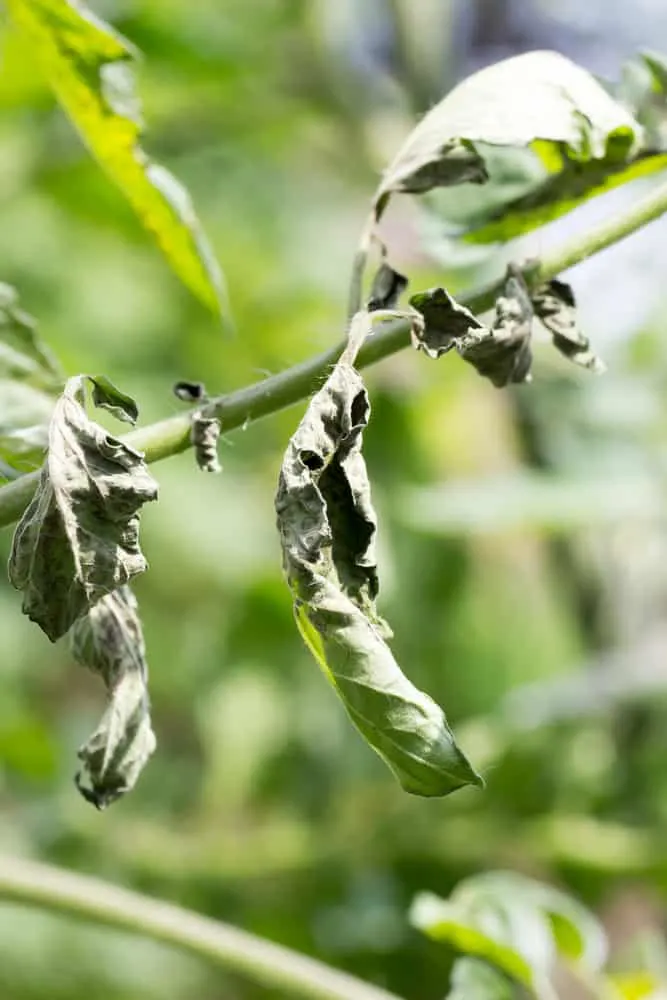
Tomato spotted wilt virus (TSWV) is one of the few serious tomato plant problems.
Despite the incredibly specific name, the virus does not only infect tomato plants. It can have an impact on hundreds of plants in your garden. In other words, any signs of TSWV require immediate attention.
The most common sign of this virus, evident in the name, is wilting. Tomato plants affected by the spotted wilt virus will have drooping leaves and stunted growth. It can also be identified by numerous yellow or brown spots that make the leaves appear bronze in color.
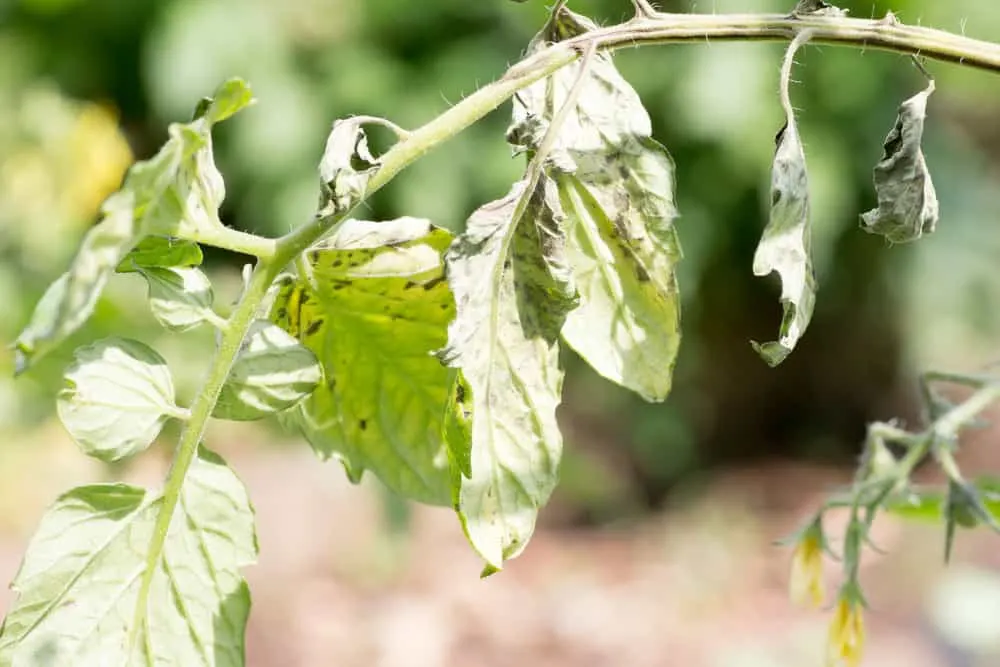
Unfortunately, there is no remedy for this problem. If left unattended, the plant will stop growing and producing fruit. It may also produce deformed, inedible fruits and drop leaves.
Worst case scenario, an infected plant left in the garden will spread the disease to other neighboring plants, resulting in their demise too. Once you discover TSWV, remove the plant from the garden immediately, avoiding contact with any other plants.
Your only option to tackle TSWV is prevention by controlling the spreader of the virus – thrips.
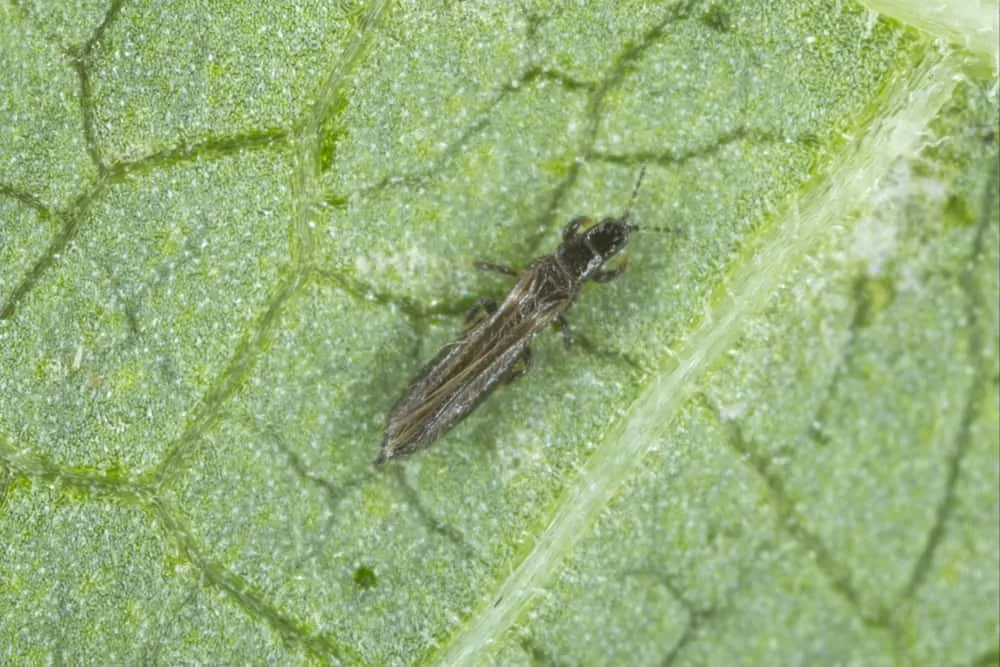
Thrips are pests you don’t want in your garden anyway, but they can be even more insidious when carrying the spotted wilt virus.
Once thrips obtain the virus from an infected plant, the virus resides in its host for life, spreading to anything and everything that the thrips feed on.
To avoid problems with thrips in your garden, inspect any seedlings from the nursery before you bring them home. Always be on the lookout for signs of a thrip problem, and apply a tomato-safe insecticide during the early stages of growth. Remove weeds frequently and keep the plants healthy so they can help deter pests on their own.
6. Fungal Wilt Diseases
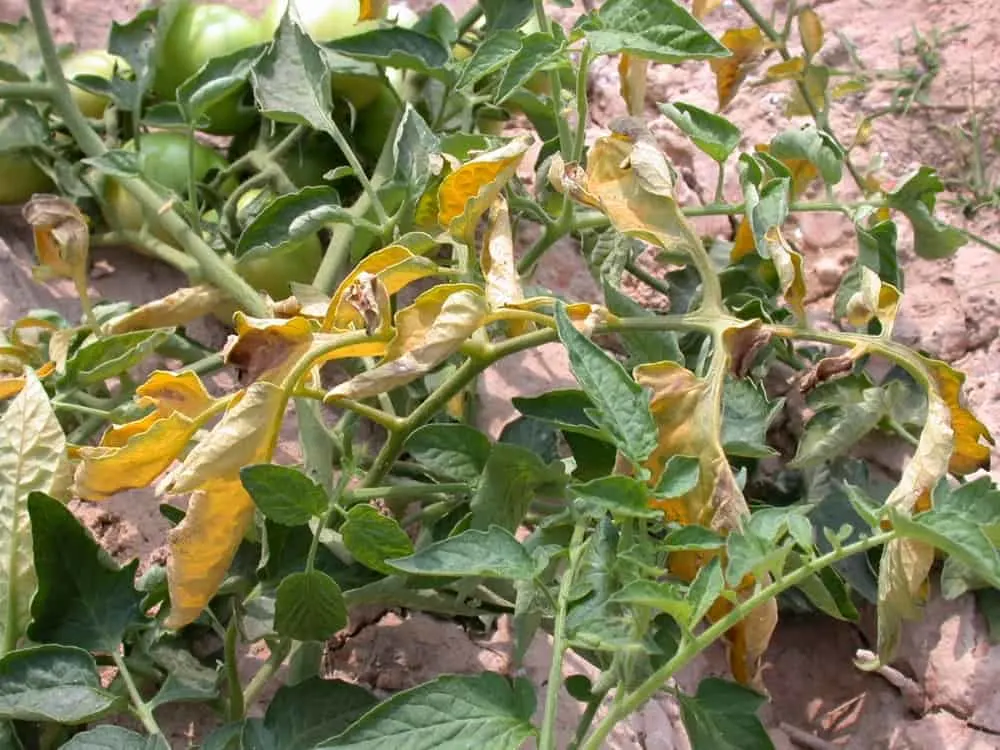
Another dangerous wilting culprit is the two fungal wilt diseases that commonly affect tomato plants: Verticillium wilt, and Fusarium wilt.
These soil-borne diseases infect the plant’s vascular system, preventing any water and essential nutrients from reaching parts of the plant. This causes the classic signs of yellowing leaves, stunted growth, and (of course) – wilting.
Once you’ve identified one of these fungal diseases, it’s too late to save the plant. Production will be impacted, the plants will likely die, and the disease can spread around your garden. Remove the entire plant and destroy it to prevent it from affecting any others.
As the fungus is soil-borne, it will stay in the same spot for at least a year, so you shouldn’t plant any more tomatoes in that spot (or any plants related to tomatoes also affected by these diseases).
Again, the best treatment for Verticillium wilt and Fusarium wilt is prevention. Luckily, prevention is relatively easy to achieve when choosing which variety of tomato to plant.
Several hybrid varieties of tomato are bred to be resistant to these diseases, identified by a V or F next to the name. Plant one of these and you won’t have to worry about any wilting caused by these diseases.
7. Bacterial Wilt
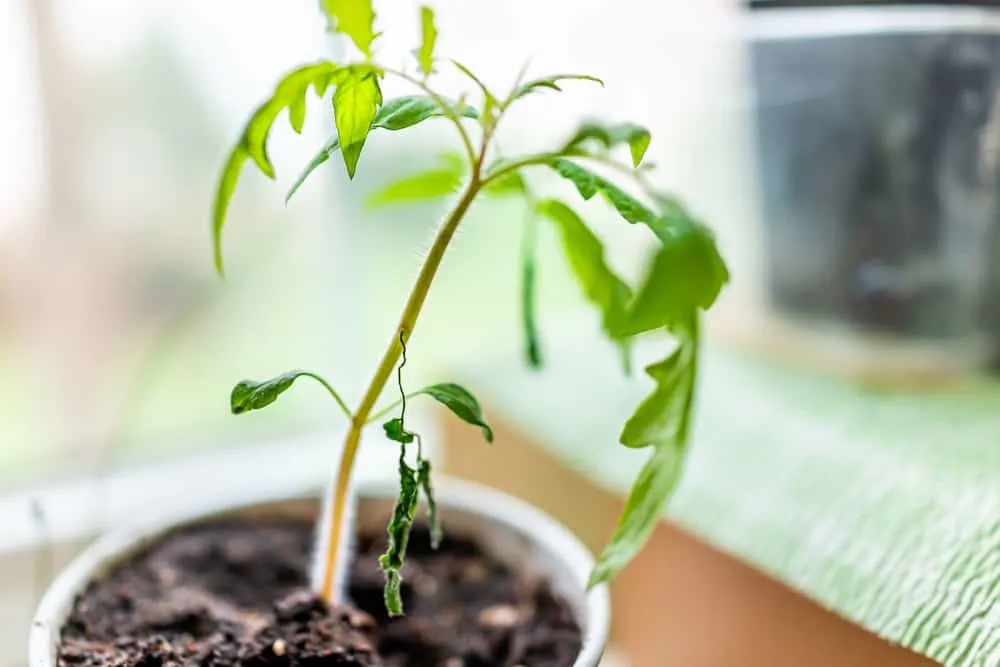
Bacterial wilt, although not as common as the other diseases mentioned, is equally as deadly. It is caused by the soil-borne bacterium R. solanacearum, and its main symptom is wilting. It remains in the soil, staying dormant for years, and there is no way to tell whether it will infect your plants until it is too late.
Bacterial wilt is often found in hot, humid environments – typically in coastal areas. It impacts tomato plants in the same way as the other wilt diseases, clogging the vascular system and stopping the plant from getting water and nutrients from the soil. Young leaves will begin to wilt first, slowly spreading to the rest of the plant until it dies.
Unfortunately, as the leaves stay green, there are few signs that indicate bacterial wilt, making it difficult to identify.
If you are experiencing prolonged problems with wilting, even after changing your watering habits, cut off a section of the stem and place it in a glass of water. A white, slimy substance will leak from the stem, indicating the presence of R. solanacearum.
Once identified, remove the plant from the garden and destroy it. Avoid planting anything affected by bacterial wilt in the same spot and practice crop rotation for good soil health.
If you live in a coastal area and frequently experience problems with bacterial wilt, you can switch to container gardening and grow healthy tomatoes outdoors, or even indoors instead.
8. Pests
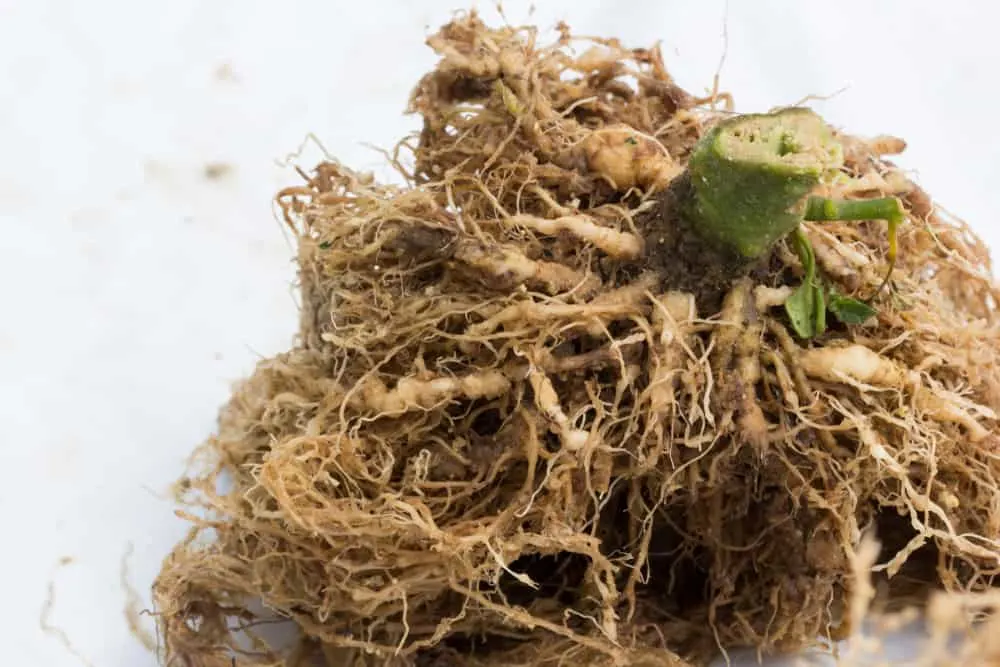
Pests can cause a number of headache-inducing problems in your garden, and wilting is one of them. Wilting caused by pests may be less common, and the other signs of infestation will usually present long before the plant starts wilting. But it is a sign none the less, and an indication that you need to take action.
The main pest culprit in tomato wilting is the stalk borer. These small caterpillars dig a tiny hole into the main stem of the plant, remaining out of sight for the rest of their residency and slowly feeding on your plant. They essentially destroy the entire water and nutrient transport system in the stalk of the plant.
Luckily, this does not always result in the death of the plant. Some healthy plants may still survive and produce a few fruits with the right care.
Another pest likely to cause wilting is the root-knot nematode. These small worms attack and feed on the roots of your tomato plant, gaining access from the soil. This stops the roots from taking up water, as with overwatering and root rot, causing the plant to wilt.
Once nematodes have taken hold, it is almost impossible to get rid of them. Rather plant resistant varieties and only purchase seedlings from trusted suppliers to avoid bringing the problem into your garden.
9. Bad Companion Plants
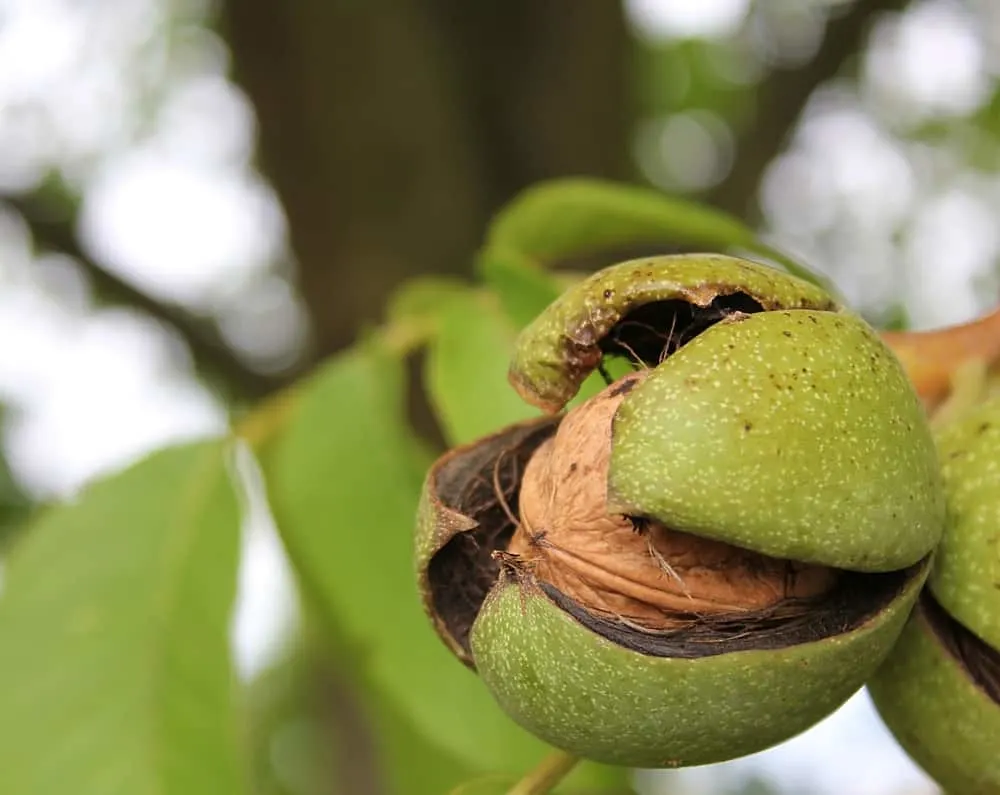
What you plant next to your tomatoes can have a big impact on their heath. This impact is hopefully positive, but there are several plants that can have a negative impact on your tomatoes.
One of those plants is the walnut.
Walnut trees produce a chemical called juglone that is toxic to tomatoes (and relatives of tomatoes like potatoes, peppers, and eggplant). If they are planted too close together, the juglone leaches into the soil and gets taken up by the plant through the roots. It will slowly kill the plant, causing a wilting appearance.
Once the plant has taken up the juglone, it quickly spreads throughout the leaves and stems, making it impossible to reverse the damage. Any tomato plant impacted by walnut tree toxins will have to be removed from the garden.
Luckily, it’s incredibly easy to prevent this issue. If you have a walnut tree in your garden, plant your tomatoes as far from the tree as possible – between 75 and 100 feet at least. Alternatively, plant your tomatoes in containers so the plant doesn’t share soil with the tree.
